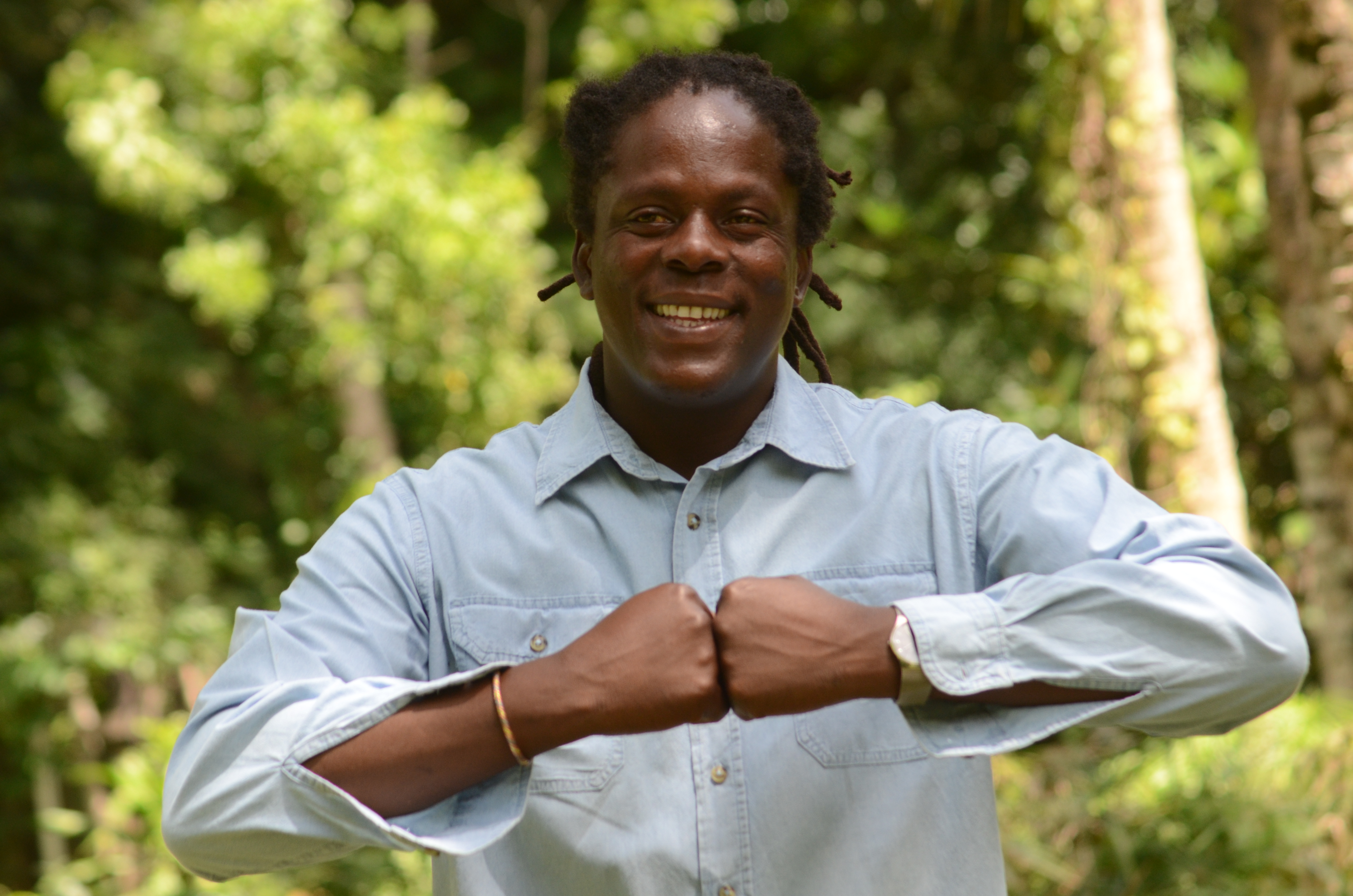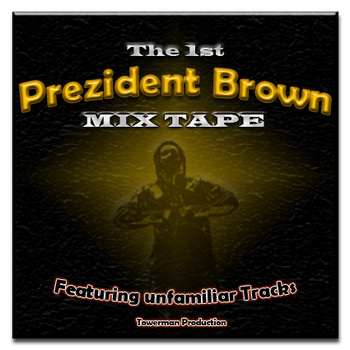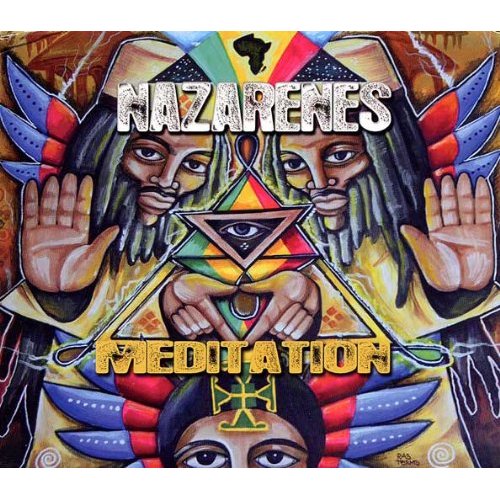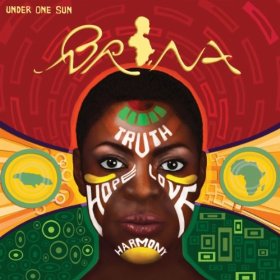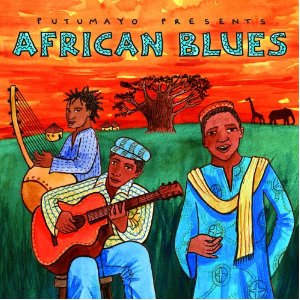(excerpted from the chapter in Authentic Blackness/”Real” Blackness: Essays on the Meaning of Blackness in Culture and Literature, ed. Martin Japtok & Jerry Rafiki (Peter Lang, 2011).)
“No one screams about Babylon more than a brown boy.”
(Participant in an on-line forum about Damian Marley & “brown boys” in Jamaican culture).
My father used to say: “I wrote all my books about child-rearing before having children.” I wrote all of my books and essays about Jamaican music and culture before living in Jamaica. My experience in Jamaica (moving there in the wake of Ivan the Terrible in 2004) strengthened my impression that rational discussions about race and gender in Jamaica are at best difficult for Jamaicans, much less for outsiders.
I lived with two school-aged children in Jamaica. As a family man, I had no problems. But the atmosphere at the University of the West Indies-Mona, where I taught for four years, was another story. UWI-Mona is an authoritarian ex-plantation. In his essay “Why I Love and Leave Jamaica” Roger Mais called UWI “a moated tower of mediocrity [that] has acquired such a body of mediocre opinion about itself that it is useless to try to make a dent in its smugness.” Garth Baker painted UWI as a parasitic “suffocating bureaucracy” which is “defensive and immune from criticism.”1 In the early 21st century, a culture of criticism hardly exists in this institution. I learned early on not to take defensiveness and ignorance personally: stories abounded about foreigners who had been savaged for daring to question conventional wisdom
I want to discuss an obsession with the “white other” in Jamaican culture. Two aspects of Jamaica’s obsession with a non-“black” other are my primary concern:
A) A compulsive othering of “brownness” in Jamaica;
B) a fixation on “white appropriation of black culture,” resulting in a rejection of ideas crucial to the “second emancipation,”2 including the notion of “One Love,” or “One Blood.”
This othering of “brown peoples” has deep roots in Jamaica. Note the evolution of the Rasta saying, “Death to white oppressors,” to “Death to white and brown oppressors.” Those who were visibly mixed or brown, a small slice of Jamaica society, were often viewed as a sort of “middle-man” between the white-man-as-oppressor, and the black-man-as-victim. Yet there is also a lengthy history of brown people who fought for “black liberation.”3
There is an ongoing, often acrimonious debate about the role that skin color had in the success of Bob Marley, Jamaica’s best-known “brown culture hero.” There is considerable resentment about “one love” being held up by foreigners as emblematic of Jamaica’s “black” culture of resistance.
Students tell me that they learn to hate white people at UWI. I cross paths with colleagues who teach the theology of black victimization, often paired with a belief in black supremacy. Their view of “white people” has evolved little from Malcolm X’s “white man is the devil” phase. I hear their opinions coming out of the mouths of my students. General indicators of what “whiteness” represents in Jamaica range from the general refusal of Jamaicans to buy white eggs, to the homeless Rasta I pass on my bicycle on Mona Road, who curses me: “Die white man!”
Jamaicans who conserve milder variations of this hostility exhibit a semi-conscious impulse to engage in guerrilla warfare against “the white man.” The resulting groupthink leads to attacks against those guilty of sins of commission (criticizing the “black masses”; too friendly to whites), or omission (insufficiently enthusiastic in the defense of black people, i.e., Garvey’s “racial empire”). Much of this residual hostility gets displaced onto browns.
The opening quote comes from Wayne Marshall’s blog. One of his Jamaican students at Brown University wrote a screed on “brown boys.” She looks at Damian Marley and sees “the image of every brown boy who went to Hillel.”4 This supposed “brown boy domain” is seen as a threat precisely because it has achieved a critical mass. This Brown student talks about Damian “being backed by…a whole slew of supportive brown boys.” In historical context, she sees brown boys all over Jamaica claiming that Bob Marley is their father. Her conclusion is polemical: “Bob was a brown boy. The way he spoke, the frass weede look on his face, the constant righteous terminology, the anger towards the government, all typical of a brown boy.”5
The commercial success of Damian Marley and Sean Paul brought a lot of tensions into the open. Take a discussion about the “white-pot head appropriation of Bob Marley” on Breath of Life. “I grew up thinking of Bob Marley as a black revolutionary,” writes Mtume ya Salaam. But after going to a largely Anglo high school in New Orleans, and working at Tower Records in the French Quarter, Mtume “learned that Bob Marley wasn’t a black revolutionary after all. In actuality, Bob was part of an (un)holy trinity [along with Che Guevara and Jimi Hendrix] of wild-eyed, long-haired, brown-skinned, pot-smoking dudes whose chief function seemed to be giving white hippie wanna-be’s something to put on the front of their T-shirts.”6 Never mind that Che smoked cigars and was fair-skinned. The point was that these “black revolutionaries” had been devalued because they had been embraced by too many ignorant whites.
For one friend of Mtume’, “the dominant image of Marley is holding a spliff looking down from a white pothead’s dormroom.” Thus, the revolutionary power of the icon has been defused for many in the African diaspora. “We don’t want to be associated with the masses of silly white people who listen to them,” as a reader Rosalind observed.
RECLAIMING “BLACK CULTURE”
Many of the people in positions of authority I heard in Kingston were busy trying to launch a crusade to “take back” Jamaica music from foreigners, especially “white people,” whom they feel have co-opted it. A proposal for a “Global Reggae” conference circulated at UWI by Carolyn Cooper, director of the International Reggae Studies Center, observes with dismay that “Most of the books on reggae have been written by non-Jamaicans.” It warns of the danger of “giv[ing] away the intellectual property that is our heritage.”7
When I was hired to teach at UWI-Mona in 2004, it was partly on the strength of my work about Marley, race and gender in Jamaican music. But I already had a more or less terminal case of “race fatigue.”8 So I hesitated when asked to give a public lecture during observations of Marley’s 60th earthday. But on reflection, I decided that if I did not have the courage to present my research to Jamaicans, then I would not be able to face myself in the mirror. So I gave a lecture titled “A ‘Second Emancipation’ Transfigured? Reflections on Bob Marley at 60.”9
Garvey’s “second emancipation” from mental slavery was a timely, and timeless idea, but Garvey’s own pronounced racialism had been a stumbling block, I argued. It was Bob Marley and the Rastas who had pointed beyond this stumbling block, the mental slavery of racialism—“the insidious confusion of race with culture,” as Ralph Ellison wrote.10 They charted this emancipatory path via a concept of transracialism rooted in a Biblical philosophy of One Blood.
I tried to make visible the international community that listens to, has been influenced by, and often now are co-creators of Jamaican-inspired music. Most Jamaican-inspired music is not made in Jamaica. The vast majority is made abroad—in Miami, Los Angeles, New York, Toronto, London, Paris, Germany, and Japan, etc.11 This is common knowledge to anyone with a rudimentary knowledge of international reggae music, but seemed counter-intuitive, or even heretical, to some of my Jamaican colleagues (although not to their children).
My second argument was to revisit Bob Marley’s de-centering of race, in his comments about his own brown-ness (“I’m not on the black man or the white man’s side”), his references to Biblical notions of non-racial community,12 and by stressing how Bob Marley grounded his fusion of African pride and trans-racialism in Haile Selassie’s own words:
“Until the color of a man’s skin is of no more importance than the color of his eyes, and until equal rights are guaranteed to all without regard to race, there will always be war.”
Making “race”/skin color the primary criterion of authenticity–or of admissibility to Jamaican-inspired culture—was illogical. Illustrating the point, I noted that my own children were the same skin color as Bob Marley. Calling attention to the biraciality of my children infuriated some in the audience. How dare I insinuate some commonality between my family and Bob Marley? This was all about policing the boundaries of kinship. If they were to concede that there was no “racial” difference between my children and Bob Marley, then that meant, on some level, that they would also have to recognize some form of kinship with these children’s father. And that is of course impossible for people who are so heavily invested in a definition of themselves as a people who have been victimized by, and permanently scarred by, “the white man.”
The blind spots into which such racialized definitions of community can lead people were made clear in my colleague Carolyn Cooper’s comments to the audience after my speech. “I’ve always had problems with that part of Selassie’s speech in ‘War’,” Cooper said. Many Jamaicans had been citing “War” as an example of the radical Bob that the global community had white-washed. But when it became clear that “War” itself lead to a sort of non-racialism that Bob Marley himself had endorsed, well then, Selassie’s words themselves had to be repudiated.
WARRING AGAINST “ONE LOVE”
Around celebrations of Bob Marley’s earthday in 2005, I noticed a virulent mood in the Jamaican public sphere. This centered on a blind opposition to the version of Bob Marley that the global public endorsed, and a re-assertion of a xenophobic definition of racial community. Melville Cooke, a race-baiting columnist for the Jamaica Gleaner, set the tone when he declared that he “despised” Marley’s song “One Love.” “This idea of loving everyone on an equal footing,” wrote Cook, “may be all right for other races,” but “it is a dangerous fantasy for black people.”13 And what Marley classic did Cooke propose as an anthem of black unity: of Jamaican resistance to the international white-washing of Marley? Why, “War,” of course…
Dancehall artist Bounty Killer went on a rant on JTV (Jamaican Television) about why black artists were not made into icons. Marley was made an icon “beca’ him the white man son,” Bounty Killer claimed.14 Gleaner columnist Kevin O’Brien Chang jumped on the bandwagon, declaring that he was so sick of “One Love” that he switched stations whenever it came on.15
There is some truth to Chang’s question: “Is it merely coincidence that the three biggest selling Jamaican artistes ever—Bob Marley, Shaggy and Sean Paul—are all noticeably part white?” But this ignores darker vocalists like Shabba Ranks or Buju Banton who blew up globally. There is a myopia resulting from the notion that anything favored by white people must be corrupted, and bad for black people (“white democracy,” for example, according to Cooke).
A year later Cooke was still proclaiming how much he despised “One Blood,” as part of his black-first crusade. Elites in Jamaica had only jumped on board Marley’s Zion Train “because foreigners…[and especially] (gasp!) white people see him as important.”16
I have seen this blind opposition to everything embraced by “white people” in many different contexts. At the Annual Bob Marley Lecture at UWI in February 2006, Federick Hickling described Jamaican popular culture as a negation of “the European Delusion.”17 Indeed, Professor Hickling’s generalizations about “the heart of the delusion,” i.e., “All that I see is mine,” were the most popular part of his lecture, and had students and professors rolling in the aisles. The racial myopia at the heart of this particular subculture became disturbingly apparent when I saw Dr. Hickling repeat this line of his Power Point presentation nine different times:
“White European
vs.
Black rest of the world.”
No leader in this subculture is challenging the notion that everyone who is not European is black, that all Europeans are “white,” or still suffer from delusions of racial superiority. Few are wrestling with the reality that this centering of Europeans is a perpetuation of mental slavery.
However, if one listens closely, there are still a few crazies around from the old days who gleefully poke holes in this over-inflated balloon of racial and national essentialism. In November 2005, Lee “Scratch” Perry, now legitimated by a Reggae Grammy, was asked on TVJ what he thought about Rita Marley’s announced plan to rebury Bob in Ethiopia.
Perry—I think Rita Marley should first dig up her family and bury them in Cuba.
Q–But what about Bob being buried close to his father?
A—If he want to be buried close to his father them should bury him in England.18
Still, there is a context that makes this opposition to the celebration of Marley as the icon of One Love overstandable. That is the “invasion” of Jamaica around 2004-2005 by Robert Roskind, a Blowing Rock, North Carolina resident who in 2001 self-published Rasta Heart: A Journey Into One Love. Books about the “discovery” by North Americans and Europeans of Rastafarianism and Bob Marley’s music are numerous. A few texts about Americans becoming involved with Rastas, or Maroons, have a pronounced literary quality, as with Book of Jamaica by Russell Banks, or Michael Kuelker’s ethno-biography, Book of Memory: A Rastafari Testimony.19 But I found Roskind’s testimony to be excruciatingly naïve. Having known many who idealized Rastafarians, I understand some of the psycho-social dynamics when someone like Roskind falls in love with Rastas, envisions them as saviors of the human race, and begins to undertake a sort of “reverse missionary” work. But the heights of Roskin’s naiveté were symbolized for me in the scene where he takes a jambox onto a Negril Beach, puts on Legend, and begins testifying to Jamaicans about the gospel of “One Love.” Beware of the recent convert!
Imagine my surprise, then, when I began seeing Roskind’s name everywhere in Jamaica. Penning a letter or editorial for the Gleaner, still in full reverse-missionary mode. Putting on concerts all over the island. Sure enough, Roskind soon found co-sponsors for this missionary work in the Marley family, and the Jamaican government, who together put on a 60th earthday tribute to Bob in New Kingston, which I attended. There was the portly Roskind on-stage, along with his wife and daughter, kind of a latter-day Ram Dass.
Roskind’s interests intersected with those of the Marley family and the Jamaican Tourist Board. The kind of idealized version of Jamaica they were marketing was not so different from the all-inclusive resorts, from which tourists seldom ventured forth to see the “real Jamaica.” Surely Roskind’s “imagined community” was preferable to the hedonistic (or simply mindless) cultural tourism one can see in films like Life and Debt and Rent a Rasta. But I’m not convinced that it has anything more to do with the “real Jamaica” that I saw every day in Kingston.20
Some Jamaicans resented do-gooders like Roskind coming to Jamaica and preaching about the obligation to live up the ideals of their world-famous philosophy. Imagine a newly converted Christian Jew who begins reciting the Sermon on the Mount on a portable loudspeaker at the Western Wall in Jerusalem: the natives might view this as a provocation, an offensive sort of moral condescension. Still, the reaction of Jamaican elites reminded me of similar action-reaction cycles I had witnessed in the U.S. When well-meaning do-the-right-thing liberals came out against any support for post- racial thinking (the movement for multi-racial or “mixed” identity, for instance), they ended up supporting a reified, essentialized black-white binary.
BLACK VICTIMIZATION AS A THEOLOGY
In a critique of a “profit while they prophet…black cultural criticism,” Norman Kelley has decried “the martyrdom hagiology that…defines African-American political culture.” These may be fighting words, but they accurately describe a history of black theology, in the works of James Cone, Albert Cleage, and others. A binary opposition between white oppression and black victimization is the cornerstone on which the whole superstructure of black theology is erected. A similar strain of thought is also entrenched in a long history of black nationalist and later Afrocentric thought. The tenor of outrage, denial, and accusation that words like “black victimization” often provoke have convinced many to let sleeping dogs lie. But they also indicate how unconscious and largely unexamined these presuppositions are.21
I do not want readers to misunderstand me. The history of slavery, as an institution, and the fight against slavery as an international movement, are topics I have studied in depth, have written about, and are themes that I continue to revisit in my classes. A thorough study of the history leading up to the “first emancipation,” of course, forms a necessary backdrop to any meaningful discussion of what a “second emancipation” would involve.
But what aspect of the slave experience is being memorialized? A particular evocation of the middle passage is memorialized in Jamaica. Take a lecture by Clinton Hutton at UWI-Mona as he introduced Kamau Braithwaite, who had returned to Jamaica November 23, 2005 to read from his book of poetry, Born to Slow Horses. Hutton described at length what he clearly saw as a defining moment: slaves lying in their own shit on a slave ship. I heard nothing about who had sold them into slavery, or what happened to those slaves who survived when they reached the New World. It was rather the most degrading moment which drew Hutton’s attention, and which he dwelt on in great detail, and with a fervor that I can only describe as religious.
Listening to Hutton, and observing his audience’s rapt response, it seemed that his obsessive dwelling upon the moment of slaves-in-shit served a dual purpose. One, the depths of this degradation was a means of measuring the heights to which the African diaspora had arisen. And two, this was an original sin which could not be washed clean, and that clearly marked, for all time, an impassable moral boundary between African and European peoples.
Another feature in the public memory of slavery is that the history of abolitionism has been virtually erased. Beyond the elision/repression of this subject, I have also been struck by the degree to which abolitionism fails to arouse curiosity. Moreover, the suggestion that abolitionism is one aspect of the experience of the African diaspora which should be taught is often met with incomprehension, or arouses opposition. Some reasons I have heard from colleagues included: Abolitionism was a movement of Europeans, or white people, and hence fails to interest me. Abolitionism was something taught by the British to cover up the depths of their own involvement in the slave trade, whereas we as West Indians teach the true nature of slavery. Abolitionism was a very small movement that really never had an impact on the Caribbean.
When I described to a neighbor the tremendous popularity of Frederick Douglass in Europe, and argued that Afro-diasporic spokespersons in fact played a pivotal role in transforming this from a fringe subculture of radical Europeans, to an influential international movement, this colleague expressed a suspicious curiosity. His perspective was that the overthrow of slavery had been accomplished almost entirely by slave revolts. I argued that these were in fact two closely related phenomena. Slave revolts empowered the spokespersons who laid out moral, economic, and political reasons to mass publics in the U.S. and Europe as to why slavery could not be sustained, and must be opposed by all means necessary.
In the Anglo-Caribbean, a history of international and interracial collaboration is seldom visible. What dominates the public memory of resistance is the image of the heroic slave, rising up in isolation. The heroic slave is a lonely slave, fighting against the system, and often indeed betrayed by brown men–or by his black woman who has been sleeping with the white man. In this racial mythology, browns are the “weak link,” making “the black race” susceptible to the corrupting influence of the white world. The purpose of this a-historical collective memory seems to be to instill a sense of race pride and solidarity, and to indoctrinate each generation of youths into the irredeemable nature of the white man and his domain. And by extension, to place brown peoples under suspicion, when it does not in fact elide brown-ness or style it white.
At UWI-Mona my office was next to the Reggae Studies Center. One day I heard a dread say passionately: “you mus know that the white man will always prevail!” This worldview was ingrained in many of my Jamaican students. When they speak of the United States, they invariably voice the deeply rooted impression that America is, first and foremost, a deeply racist country where they will never be welcome. They may believe that the streets are paved with gold, and feel assured that emigrating to the U.S. will let them make a fortune. But they have no hopes of encountering any sort of community that transcends race. They imagine economic success as occurring in a social and political vacuum.
The irony is that some of these students go to the U.S. with affirmative action funding. They tell me about their surprise as universities court them as a “prize catch.” I watch the female Anglo exchange students throwing themselves at the Jamaican men, especially those with dreads. And I watch the young dreads playing this game with great skill. I know that they will be able to profit from their “victimization” (or perceived exoticism) in the U.S. for years. They will be able to “breed” many women, and if they choose, not to be present for the rearing of their children, then they can always blame racism, or slavery, for their behavior.
I have come to believe that racial categories themselves, and the quest for messianic figures, are both cornerstones of our collective mental slavery.22 Jamaicans, like any people, have the right to define themselves as they see fit. But because their self-definition is so centered on efforts to oppose, or exclude, a non-black other, then I and my children are indeed involved, and affected, for better or worse. My daughter Sela spent a month at an all-black girl’s school near Half-Way Tree, Merl Grove High. She was the only brown girl there, but they styled her as white. One day a student cut in front of her in line, saying “black before white.” That incident took on symbolic weight: for me part of the daily proof that “Marcus Garvey’s words come to pass”—that the “racial hierarchy and catechism” Garvey advocated has acquired an “eternal life” as a racial theology: an unquestionable encoding of belief that has burrowed into the deepest levels of Jamaican culture and collective (un)consciousness.
But the alternatives are all around, in the greater Caribbean and Latin American world. If I were to accept, for the sake of argument, the metaphor of a returning Jesus who changed his skin color, or his language, to better blend in with (and speak to) contemporary realities, then in the 21st century, I believe she would have to return as a mestiza. Someone who looked not unlike Bob Marley’s children. Or mine.
NOTES
1) Roger Mais and the report by Garth Baker are both discussed by Mark Wignall in “UWI Mona and Math Department Mired in Backwardness,” Jamaica Observer (April 15, 2007).
2) Gregory Stephens, “A ‘Second Emancipation’: The Transfiguration of Garvey’s ‘Racial Empire’ in Rastafarian Thought,” Reevaluating the Pan-africanism of W.E.B. Dubois and Marcus Garvey: Escapist Fantasy or Relevant Reality, ed. James Conyers (Edwin Mellen, 2006).
3) See sections on “brown redeemer” in Richard D.E. Burton, Afro-Creole: Power, Opposition, and Play in the Caribbean (Ithaca, NY: Cornell UP, 1997), 114, 147.
4) Hillel, an elite private school in the hills above Kingston, is widely perceived as a “Jewish School,” and indeed a producer of upper-class, usually fair-skinned snobs.
5) “Wayne&wax” blog, titled “Welcome to Jamrock, Indeed,” May 1, 2005; http://wayneandwax.blogspot.com/2005/05/welcome-to-jamrock-indeed_01.html. Wayne Marshall had published “Rude boys inna da hood: Rap meets reggae with Sean Paul and Damian “Jr. Gong” Marley,” in the Boston Phoenix (Oct. 28-Nov. 3, 2005).
6) Mtume ya Salaam, Kalamu ya Salaam, Paul Roberts, et al., “The white-pothead appropriation of Bob Marley,” October 9, 2005; http://www.kalamu.com/bol/2005/10/09/bob-marley-the-wailers-%E2%80%9Crastaman-chant%E2%80%9D/
7) “Gobal Reggae: The Transnationalization of Jamaican Popular Culture. An International Conference on Popular Culture to be Convened at the University of West Indies-Mona, Jamaica [during] Janaury 2007.” A flyer circulated by Carolyn Cooper and in this author’s possession.
8 ) My on-line writing on Jamaican and gender includes “A Culture of Intolerance: Insights on the Chi Chi Man Craze and Jamaican Gender Relations with Julius Powell of JFLAG” (Spring 2002); http://jahworks.org/2002/gregorystephens/music/a-culture-of-intolerance ; “The FIYA BURN Controversy: On the Uses of Fire in a Culture of Love and Rebellion” (Spring 2001); http://jahworks.org/2000/gregorystephens/music/reggae/the-fiya-burn-controversy. Race fatigue: a term employed by Shelby Steele in The Content of Our Character.
9) Gregory Stephens, “A ‘Second Emancipation’ Transfigured? Reflections on Bob Marley at 60,” Jahworks.org, February 2, 2005.
10) “insidious confusion,” Ralph Ellison, “Going to the Territory,” in Collected Essays, 606.
11) An example of my writing on the “dub revolution” and Jamaica’s international influence: “Finding a Musical Home: Through the German-UK Looking Glass,” Reggae Vibes (May 2004); http://www.reggae-vibes.com/concert/dubrevol/dubrevol.htm. I did not mention African as one of the important sites of outernational reggae, not because reggae in not important, but because discussion of African reggae artists is not racialized in the same way as non-Jamaican artists from other continents.
12) “all one”: Galations 3:28; One Blood, Acts 17:26.
13) Melville Cooke, “Who made ‘One Love’ Marley’s signature song?” Jamaica Gleaner, February 10, 2005.
14) Bounty Killer on “Entertainment Report,” JTV February 18, 2005.
15) Kevin O’Brien Chang, “Oh, for a Jamaica music day!” Jamaica Gleaner, February 13, 2005.
16) Melville Cooke, “(Dis)re(membering) Bob Marley,” Jamaica Gleaner, February 9, 2006.
17) Frederick Hickling, “We Neva Now We Wudda Reach Dis Far: The Psychology of Stardom in Jamaican Popular Culture,” The Annual Bob Marley Lecture, sponsored by The Reggae Studies Unit, University of West Indies-Mona, Febuary 17, 2006.
18) Lee Scratch Perry, interview with Anthony Miller, TV Jamaica, November 11, 2005.
19) Michael Kuelker, Book of Memory: A Rastafari Testimony (St. Louis: CaribSound, 2005); Russell Banks, The Book of Jamaica (Harper, 1996); Robert Roskind, Rasta Heart: A Journey into One Love (One Love Press, 2001).
20) Stephanie Black, dir., Life and Debt (New Yorker Video, 2003); J. Michael Seyfert, dir., Rent a Rasta (Cinepobre, 2006), http://www.rentarasta.com/. The practices seen in Rent a Rasta, see Julia Connell Davidson and Jacqueline Sánchez Taylor, “Travel and Taboo: Heterosexual Sex Tourism to the Caribbean,” in Elizabeth Bernstein and Laurie Schaffner, eds., Regulating Sex: The Politics of Intimacy and Identity (Routledge: 2004). Benedict Anderson, Imagined Communities: Reflections on the Origin and Spread of Nationalism (London: Verso, 1983/1991).
21) Norman Kelley, “Black Cultural Criticism, Inc.,” July 17, 2004. A blatant expression of the theology of black victimization is Albert Cleage’s The Black Messiah (New York: Sheed & Ward, 1968). In Black Theology and Black Power, James Cone also uses black victimization as a starting point. See also James H. Cone, “Black Theology in American Religion,” Theology Today 43:1 (April 1986). Critiques: Rosemary Ruether argues that Cone’s “kind of theology primarily addresses white people,” i.e., it centers on its other. “Black Theology vs. Feminist Theology,” Christianity and Crisis (April 15, 1974). William Jones, “Theodicy and Methodology in Black Theology: A Critique of Washington, Cone and Cleage,” The Harvard Theological Review 64.4, Theology and the Black Consciousness (Oct., 1971), pp. 541-557.
22) Growing consensus against racial categories, Brent Stapes, “On Race and the Census: Struggling with Categories that no longer Apply,” New York Times Feb. 5, 2007.
